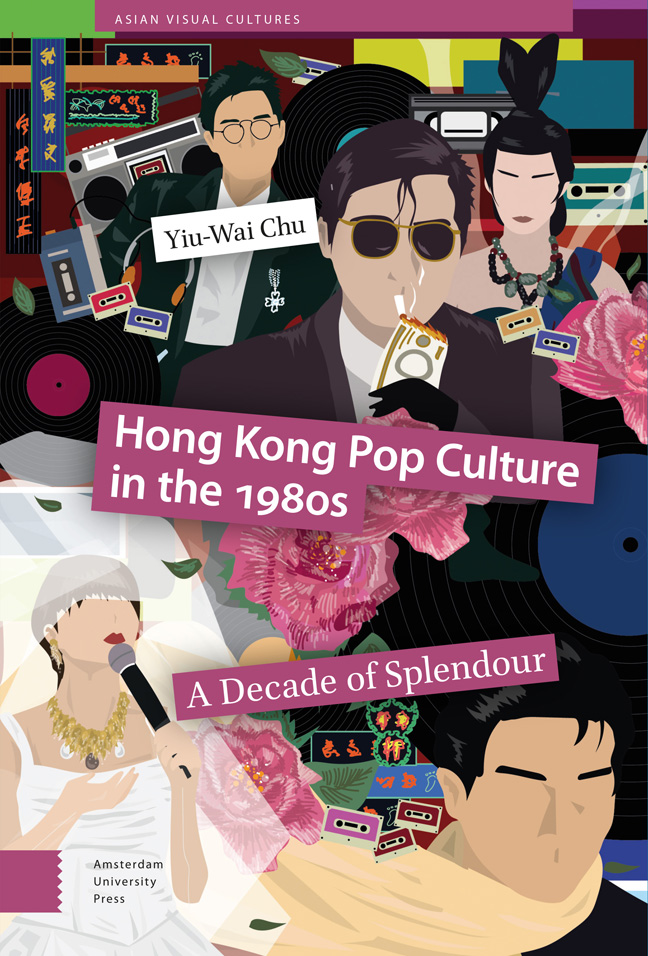Book contents
- Frontmatter
- Acknowledgments
- A Note on Romanization and Translation
- Contents
- Dedication
- Prologue: Horse Racing and Dancing as Usual
- Introduction
- 1 Televising Pop: New Stars and Renewed Sensibilities
- 2 Golden Days of the Silver Screen: Cinematic Imagination in a Not Yet Fallen City
- 3 The Sound of Chinese Cool: Do You See the City Sing?
- 4 The Importance of Being Chic: Fashion, Branding, and Multimedia Stardom
- 5 The Practice of Everynight Life: Disco as Another Kind of Dance
- 6 (Un)Covering Cosmopolitan Hybridity: Every Great City Deserves a City Magazine
- Epilogue: ‘We’ll Always Have Hong Kong’
- Select Bibliography
- Glossary
- Index
4 - The Importance of Being Chic: Fashion, Branding, and Multimedia Stardom
Published online by Cambridge University Press: 20 February 2024
- Frontmatter
- Acknowledgments
- A Note on Romanization and Translation
- Contents
- Dedication
- Prologue: Horse Racing and Dancing as Usual
- Introduction
- 1 Televising Pop: New Stars and Renewed Sensibilities
- 2 Golden Days of the Silver Screen: Cinematic Imagination in a Not Yet Fallen City
- 3 The Sound of Chinese Cool: Do You See the City Sing?
- 4 The Importance of Being Chic: Fashion, Branding, and Multimedia Stardom
- 5 The Practice of Everynight Life: Disco as Another Kind of Dance
- 6 (Un)Covering Cosmopolitan Hybridity: Every Great City Deserves a City Magazine
- Epilogue: ‘We’ll Always Have Hong Kong’
- Select Bibliography
- Glossary
- Index
Summary
It is only shallow people who do not judge by appearances. The true mystery of the world is the visible, not the invisible.
Abstract
This chapter explores how the rise of fashion brands and the proliferation of the spectacular images of rising stars helped Hong Kong firmly established its role as a trendsetter in the 1980s. Not only did stars like Danny Chan, Leslie Cheung and Anita Mui become style icons who dictated trends, a generation of Hong Kong fashion designers also came to the fore, proving that Hong Kong had developed into a centre of fashionable chic. Joyce and Esprit, which introduced a host of high-end fashion labels and targeted mainly at the younger generation, respectively, are used as examples to showcase the diversity of Hong Kong fashion in the 1980s.
Keywords: Hong Kong chic, fashion icons, designer labels, Joyce Boutique, Esprit
Fashioning the City
Fashion and lifestyle are effective benchmarks against which the image of a metropolitan city is measured. Fred Davis cited the above as the epigraph of the first chapter of his Fashion, Culture, and Identity, in which he begins with this statement: ‘That the clothes we wear make a statement is a statement that in this age of heightened self-consciousness has virtually become a cliché.’ While Davis was referring to the relationship between fashion and the cultural identity of individuals, his statement perfectly fits that of cities as well. Usually New York, Paris, London, Milan, and Tokyo top the familiar list of cities that conjure up the image of high fashion, and a ‘big city look’ is deemed as revealing a certain distinctive type of metropolitan chic. Hong Kong has taken pride in being compared with these global cities. For example, when the January 2008 issue of TIME magazine (Asia Edition) coined the term ‘Nylonkong’ to tell the stories of the three connected cites that ‘drive the global economy’, Donald Tsang, the then Chief Executive of the Hong Kong Special Administrative Region (SAR), considered Hong Kong as playing a similar role in Asia as New York in North America and London in Europe, echoing the term ‘Nylonkong’. As Richard Florida argued in his Who's Your City?, however, ‘personal’ characteristics are pertinent factors that make a city attractive in the age of the global economy. Whether Hong Kong could develop its own distinctive characteristics was much more important than the term itself.
- Type
- Chapter
- Information
- Hong Kong Pop Culture in the 1980sA Decade of Splendour, pp. 145 - 176Publisher: Amsterdam University PressPrint publication year: 2023

